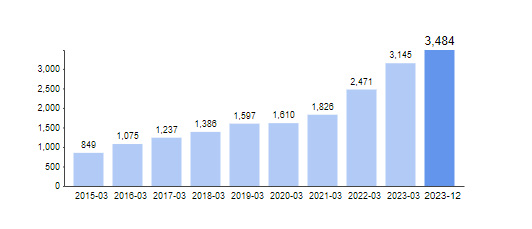20 Recommended Ways For Deciding On Ai Sports Betting
20 Recommended Ways For Deciding On Ai Sports Betting
Blog Article
Top 10 Tips To Focusing On Risk Management For Ai Stock Trading From Penny To copyright
Risk management is essential for AI stock trading success, especially on high-risk markets such as penny stocks and copyright. Here are ten ways to effectively integrate risk management techniques in your AI strategies.
1. Define Risk Tolerance
Tip - Establish a clear maximum acceptable loss per trade, per day and for the entire portfolio.
You can set your AI trading system parameters precisely by knowing the risk level.
2. Automated Stop-Loss Orders and Take Profit Orders
Tip: Use AI for dynamically adjusting the levels of stop-loss and take-profit based on the volatility of the market.
Why: Automated safeguards limit possible losses, and also lock in profits without emotional interference.
3. Diversify Your Portfolio
Tips: Spread investment across different assets, sectors, and markets (e.g., mix penny stocks, large-cap stocks, and copyright).
The reason: Diversification decreases exposure to any single risky asset, while also making sure that potential gains and losses are balanced.
4. Set Position Sizing Rules
Tip: Make use of AI to calculate position sizes based upon:
Portfolio size.
The risk per trade is e.g. 1-2 1 % of your portfolio.
Asset volatility.
The reason: Proper sizing of your position will prevent overexposure to high-risk transactions.
5. Monitor the volatility of strategies and modify them
Utilize indicators to gauge the level of volatility, like the VIX in stocks or on-chain data for copyright.
Why is higher volatility a call for tighter risk control, adaptive trading strategies and higher levels of trading.
6. Backtest Risk Management Rules
Tip: In order to assess the effectiveness of risk control parameters, like stop-loss limits and position sizes, you should include them in your backtests.
Why: Testing ensures your risk measures are viable in the various market conditions.
7. Implement Risk-Reward Ratios
Tips - Ensure that every trade is based upon an investment risk/reward ratio of 1:13 or greater (risking $1 to make $3).
The reason: Consistently using favorable ratios improves long-term profitability despite losses from time to time.
8. AI is able to detect anomalies and respond accordingly
Tip: Set up anomaly detection software to detect unusual patterns in trading like sudden increases in volume or price.
The reason is that early detection allows you to modify your strategies or stop trading prior to the onset of a major market change.
9. Hedging Strategies to Incorporate
Tip: Use hedging techniques such as futures or options to mitigate risks.
Penny Stocks: Hedge with sector ETFs or other related assets.
Use stablecoins to hedge your portfolio or the inverse exchange traded funds.
Why: Hedging helps protect against price fluctuations that could be detrimental to the business.
10. Continuously monitor risk parameters and make necessary adjustments.
Make sure you update your AI trading systems risk settings to reflect the changing market conditions.
The reason: Dynamic risk management ensures that your strategy is applicable across different market conditions.
Bonus: Use Risk Assessment Metrics
Tip: Evaluate your strategy using metrics like:
Max Drawdown: Largest portfolio drop from peak to trough.
Sharpe Ratio: Risk-adjusted return.
Win-Loss Relative: The number of profitable trades compared to losses.
What are the reasons: These metrics could provide insight into the performance of your strategy and its risk exposure.
These tips will help you build a solid risk management system to improve the security and effectiveness of your AI trading strategy for copyright markets, penny stocks and various financial instruments. View the top free ai tool for stock market india url for more advice including ai stock prediction, investment ai, ai trading bot, ai trading, trade ai, ai trading software, ai stock trading bot free, best ai for stock trading, copyright ai trading, ai stock picker and more. 
Top 10 Tips For Ai Stock Pickers And Investors To Pay Attention To Risk Metrics
A close eye on risk metrics can ensure that your AI-based stock picker, investment strategies and forecasts are adjusted and resistant to any changes in the market. Being aware of and minimizing risk is vital to shield your investment portfolio from big losses. This also helps you make informed data-driven decisions. Here are ten strategies for integrating AI investment strategies and stock-picking along with risk indicators:
1. Understanding the key risk indicators: Sharpe ratios, max drawdown, Volatility
Tip - Focus on key risk metric such as the sharpe ratio, maximum withdrawal, and volatility to assess the risk adjusted performance of your AI.
Why:
Sharpe ratio measures return in relation to risk. A higher Sharpe ratio indicates better risk-adjusted performance.
Maximum drawdown is the most significant peak-to-trough loss and helps you understand the potential for large losses.
Volatility is a measurement of the risk of market volatility and price fluctuations. The high volatility of the market is linked to higher risk while low volatility is linked with stability.
2. Implement Risk-Adjusted Return Metrics
Tips: To assess the actual performance, you can utilize indicators that are risk adjusted. This includes the Sortino and Calmar ratios (which focus on risks that are a risk to the downside) and also the return to maximum drawdowns.
What are the reasons: The metrics will reveal the way your AI model performs in relation to the risk level. This will help you to determine if the risk is justifiable.
3. Monitor Portfolio Diversification to Reduce Concentration Risk
Use AI optimization and management tools to ensure that your portfolio is well diversified across asset classes.
Diversification reduces the concentration risk that can arise when an investment portfolio becomes too dependent on a single sector either stock or market. AI can be utilized to determine correlations and then make adjustments in allocations.
4. Monitor Beta to Determine Sensitivity to the Market
Tips Use the beta coefficent to measure your portfolio's or stock's sensitivity to general market fluctuations.
Why: Portfolios with betas that are greater than 1 are more unstable. A beta lower than 1 indicates less risk of volatility. Understanding beta helps in tailoring risk exposure based on the market's movements and risk tolerance.
5. Set Stop-Loss and Take-Profit levels Based on Risk Tolerance
To manage losses and lock profits, establish stop-loss or take-profit thresholds using AI prediction and risk models.
What are the benefits of stop losses? Stop losses protect you from excessive loss and take-profit levels guarantee gains. AI can identify optimal levels through analyzing price fluctuations and fluctuations. This can help keep a healthy equilibrium between risk and reward.
6. Monte Carlo simulations may be used to assess the level of risk in various scenarios
Tips: Make use of Monte Carlo simulations in order to simulate a variety of possible portfolio outcomes under various market conditions.
Why is that? Monte Carlo simulations are a method to gain a probabilistic picture of the future performance of a portfolio. This lets you to better plan for risks such as extreme volatility and large losses.
7. Examine correlations to determine systemic and unsystematic risk
Tips: Make use of AI for correlation analysis between your investments and broader market indexes in order to determine both systemic and unsystematic risk.
Why: Unsystematic risk is unique to an asset. However, systemic risk is affecting the entire market (e.g. recessions in the economy). AI helps identify and limit unsystematic risk by recommending less correlated assets.
8. Be aware of the Value at Risk (VaR), in order to estimate the risk of loss
Utilize the Value at Risk models (VaRs) to estimate potential losses in a portfolio based on an established confidence level.
What is the reason? VaR gives you a clear picture of the worst-case scenario for losses, and lets you assess your portfolio's risk in the normal market. AI can be used to calculate VaR dynamically while responding to market changes.
9. Set flexible risk limits that are based on market conditions
Tips: Make use of AI to adapt limits of risk based on the volatility of markets and economic conditions, as well as correlations between stocks.
The reason: Dynamic risks your portfolio's exposure to excessive risk when there is a high degree of volatility or uncertain. AI can analyze the data in real time and adjust your portfolio to ensure the risk tolerance acceptable.
10. Machine learning is a method to anticipate tail events and risk variables.
Tips - Use machine-learning algorithms to predict extreme events or tail risk Based on historical data.
Why is that? AI models are able to identify risk patterns that traditional models could miss. This allows them to assist in predicting and planning for rare, but extreme market events. Tail-risk analysis can help investors comprehend the potential for catastrophic losses and prepare for them in advance.
Bonus: Reevaluate Your Risk Metrics based on changing market Conditions
TIP A tip: As the markets change, you must continually review and revise your risk management models and risk metrics. Update them to reflect the evolving economic geopolitical, financial, and aspects.
Why? Market conditions are constantly changing. Relying on outdated risk assessment models can lead to inaccurate assessments. Regular updates are required to ensure that your AI models can adapt to the latest risk factors and also accurately reflect market dynamics.
This page was last modified on September 29, 2017, at 19:09.
By keeping track of risk-related metrics and incorporating them in your AI stock picker, forecast models and investment strategies you can build a adaptable and resilient portfolio. AI provides powerful tools to assess and manage risk, allowing investors to make informed, data-driven decisions that balance potential returns while maintaining acceptable risk levels. These tips are designed to help you create an effective risk-management strategy. This will increase the stability and return on your investment. View the most popular investment ai examples for more recommendations including ai stock trading bot free, ai in stock market, copyright ai bot, ai stock price prediction, coincheckup, free ai trading bot, best ai for stock trading, free ai tool for stock market india, stocks ai, trading ai and more.